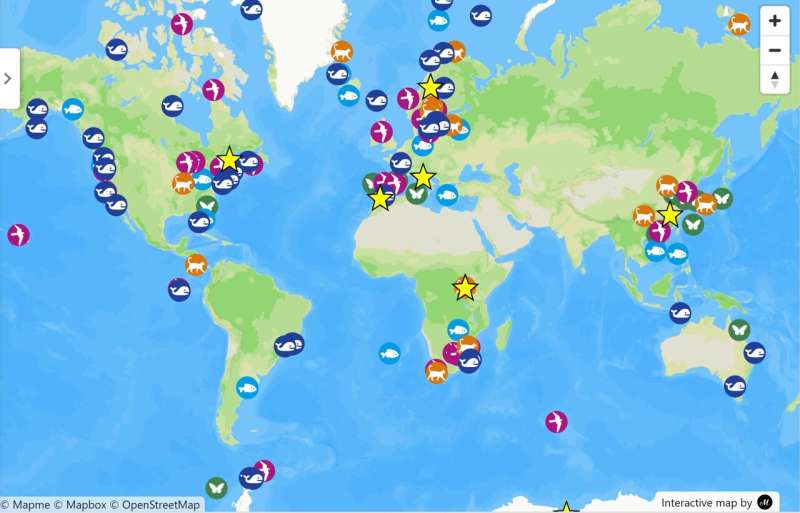
More than 150 species of wild animals across every continent are contaminated with flame retardant chemicals, according to a new map tracking peer-reviewed research worldwide.
Polluted wildlife include killer whales, red pandas, chimpanzees and other endangered species. Added to furniture, electronics, vehicles, and other everyday products to meet flammability standards, the chemicals often do not work as intended. They also migrate out of products and into wildlife—and people.
“Flame retardants don’t actually make TV enclosures and car interiors more fire-safe, but they can harm people and animals,” said project lead Lydia Jahl, a scientist at the Green Science Policy Institute. “Though these product flammability standards may seem protective at first glance, many cause widespread and lasting harm for no real benefit.”
Flame retardants found in wildlife include both older phased-out chemicals like polychlorinated biphenyls (PCBs) and polybrominated diphenyl ethers (PBDEs) as well as newer replacements chemicals like chlorinated paraffins and organophosphate flame retardants. Though known to cause liver, thyroid, and kidney cancers in laboratory animals, chlorinated paraffins are still commonly used in consumer products, with more than one million tons produced annually. Similarly, use of organophosphate flame retardants is proliferating, though even low levels may harm IQ, attention, and memory in children.
Scientists calculate that PCB contamination could wipe out half the world’s killer whale populations over the next century. That’s despite the fact that PCBs have been banned since the 1970s.
Flame retardants are also found in species living in areas far from their production, use, and disposal, showing their potential for long-range transport. For example, high levels of flame retardants have been detected in chimpanzees in a protected Ugandan National Park.